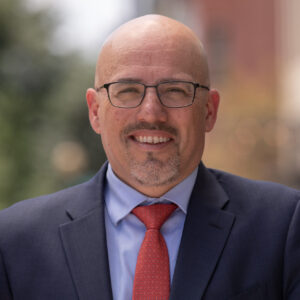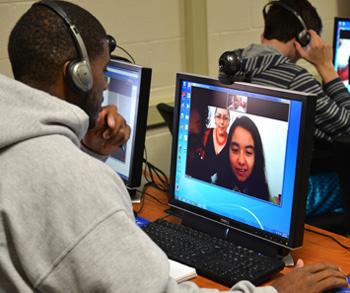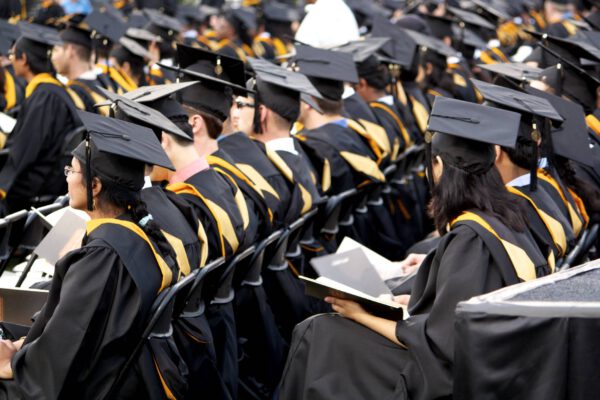By Louis Soares and Amber Garrison Duncan
There are nearly 1 million unique credentials offered in the United States, including certificates, micro-credentials, badges, and certifications in addition to traditional degrees. Yet learners are struggling to find pathways to economic mobility in a labor market that still values four-year degrees: Approximately 70 million adults have the skills to do middle- and high-wage jobs but lack the degree to meet the stated qualifications.
This disconnect is especially urgent in our current economic context as we try to recover from the COVID-19 pandemic and get people back to work. As of mid-June, over 3.2 million Americans had filed unemployment claims for the past two weeks or longer, yet the number of new job postings is now 63 percent higher than in February 2020. In the healthcare field, the number of new postings is 124 percent higher, and even in the recreation and travel industry, which has been battered by the pandemic, the number of new postings is 30 percent higher.
The fact that our education and employment ecosystem has so many pathways to acquire skills is essential for finding capable workers to fill open jobs, but we are still missing the ability to verify and translate the credentials earned from those pathways into economic opportunity. This problem will only get worse as the future of work continues to shift and lifelong learning requires a growing array of credentials. But with so many pathways available, we need to ensure that people benefit from their new skills. Otherwise, we risk their training being for naught as employers struggle to understand how to evaluate prospective employees’ skills and knowledge.
To bridge this disconnect between learners, credential providers, and employers, we must experiment with new technologies that can equitably streamline communication. Blockchain holds particular promise to empower learners to own and share verified data about their education and skills.
Recognizing this potential, last summer, ACE’s Blockchain Innovation Challenge invited teams to develop pilot projects that could help individuals, especially those who are most underserved by the current ecosystem, gain more control over their learning records.
The challenge specifically sought bold ideas that challenged traditional paradigms of how our current education and employment ecosystem is set up and reorient that ecosystem around learners. The decision to ask for pilot projects rather than immediate full-scale solutions gave teams more room to experiment and innovate, which we expect to produce stronger long-term results.
This emphasis on experimentation is especially critical in the current moment for two reasons. First, the COVID-19 pandemic has increased the pace of automation, remote work, and other workforce changes, ushering in a new “future of work” quicker than anyone had predicted. These changes will only continue as more and more people return to in-person work and, in some cases, to jobs that have been significantly altered by the pandemic. This new world of work will require new (and often shorter) types of credentials and new strategies for documenting and communicating that learning.
Second, our “K-shaped” economic recovery has exacerbated equity gaps that have persisted for decades, and we need new ideas to close them once and for all. After the initial spike in unemployment at the start of the pandemic, it took six months longer for the Black unemployment rate to drop below 10 percent than for the white unemployment rate to do so, and at times, the gap in unemployment rates between Black and white workers during the pandemic has been larger than it was before. In addition, employment rates for jobs paying $27,000 per year or less decreased by 22.5 percent after the pandemic broke out, whereas they actually increased by about 3 percent for jobs paying above $60,000.
The challenge named four Phase 1 winners from around the country who then piloted minimum viable products, or MVPs. These MVPs allowed the winners to demonstrate the feasibility of their ideas and make adjustments before they moved forward with full implementation for use by students, institutions, and state systems in Phase 2.
In Nebraska, the nonprofit Student1 is working with several state-level partners, including the Nebraska Department of Education and Nebraska Department of Health and Human Services, to integrate information from state educational, judicial, and behavioral services into a single learner record for Nebraska’s K–12 students.
At the postsecondary level, Texas Woman’s University formed a consortium of institutions in North Texas that will all use a shared platform to store students’ educational records and allow students to share those records with other institutions and employers.
The Lifelong Learner Project, Powered by Teachers, is also developing secure and verifiable records, but for teachers. The project, led by RANDA Solutions, is creating digital wallets that can hold teachers’ credentials, certifications, and learning resources and allow teachers to share them with companies, learning management systems, and state agencies.
Finally, UnBlockEd is an initiative to streamline credit transfer led by the University of Arizona. The university and its partners created an end-to-end platform that will eliminate the need for manual credit transfer and make the transfer process more efficient and equitable for students. At the same time, it will give students more control over their learner records.
These four projects represent promising steps forward in helping workers translate their skills and educational experiences into economic opportunity and mobility. But, while we are excited to watch these projects grow in Phase 2 of the challenge and beyond, we also need others to get involved.
As a society, we urgently need to brainstorm and test innovations that can help people find pathways to careers and share their knowledge and skills. Developing new ways to help workers acquire skills, document what they know and can do, and convey their abilities to employers can be a critical lever to increase economic equity and upward mobility. We simply cannot afford a K-shaped recovery, which will further entrench resource and opportunity gaps and limit our economy’s ceiling.
The jobs are there, and so are the workers to fill them. But we need innovative strategies to bring these workers and jobs together and open up opportunities for people who have historically been underserved by the current system or left out of economic growth altogether.
If you have any questions or comments about this blog post, please contact us.


